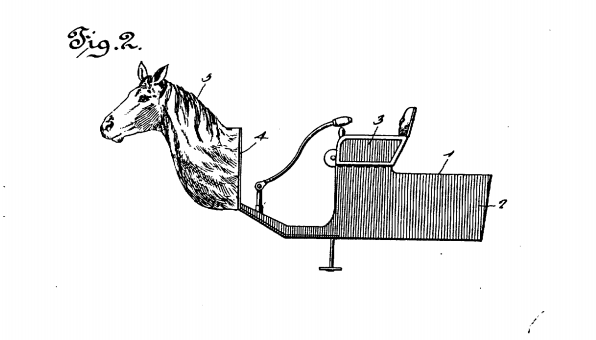The Horseless Headsman
New technology always has its fair share of skeptics, and to be fair, as we learn to use the new devices and products that come our way, we also learn their limitations and drawbacks. When the car was first invented in the 1880s or so (the timing really depends on what one defines as the first car), this was certainly true. At the time, the mere idea of a self-propelled machine seemed impossible; seeing one in action may have been downright scary.
But people weren’t alone in fearing these new vehicles. So did the horses.
For decades before cars took to the streets, our roadways were the dominion of horses. Whether a solo traveler was riding on horseback or a group of people were in a horse-drawn carriage, either way, four-legged animals were doing the work and sharing the roads with people. And while people could, in they wanted to, learn more about these horseless carriages and their potential dangers, horses couldn’t.
Unfortunately, many horses were scared of these moving things that didn’t look anything like them. And, in 1899, a Michigan preacher named Uriah Smith saw this as a problem that needed a solution. As Wired explains, Smith believed that “the biggest problem with cars was that they scared the bejeezus out of horses.” And scared horses on roadways is a recipe for disaster; it led to accidents, injuries, and even human deaths. Wired provides some perspective: “In 1900, they killed 200 people in New York City, according to the University of California Transportation Center’s ACCESS magazine. In 2014, when the city’s population was four times larger, fewer than 300 people were killed in all traffic accidents.”
Smith, a hobbyist engineer, decided to come up with a solution. Here’s what it looked like:

Yes, that’s a horseless carriage cart — with a horse head attached to the front.
Smith filed a patent (available here as a pdf) for a “new and original design for a vehicle-body” that he hoped would help stem the tide of horses scared by cars. Called the “Horsey Horseless,” the concept, per Time Magazine, “intended to soothe the skittish nerves of our equine servants. A wooden horse head was attached to the front of the chuffing buggy in order to make it resemble a horse and carriage.” If a horse saw a fake horse approaching, it could be fooled into thinking that the unusually loud contraption behind it was not a danger.
And that wasn’t the only suggested benefit of having a fake horse head attached to the front of your vehicle. Per car publication Hagerty, “the Horsey Horseless was also helpful, Smith reasoned, in that it was hollow, so it could house an additional fuel tank.” But that, too, had a problem. Continues Hagerty: “What he didn’t consider, perhaps, is how poorly a horse might react to the sight of a fellow Equidae’s head exploding, should it meet with a well-placed spark.”
And alas, these flaws may have proven fatal for the Horsey Horseless. While the patent was probably turned into a prototype, there’s no evidence that the fake horse head car ever made it to consumers. There’s good reason for that, says Lauren Fraser, a horse behavior consultant quoted in the above-linked Wired piece: “The animals deserve—but don’t always receive—a bit more credit than that for their intelligence.”
Bonus fact: Generally speaking, the President of the United States doesn’t drive to work, or for that matter, anywhere else. As a result, it’s very hard for the President to get a speeding ticket. But it happened once. In 2012, then D.C. Police Chief Cathy Lanier told the local radio station that the Metropolitan Police Department did, in fact, pull the President over for driving too fast at one point in its history, with one wrinkle. DCist explains: “Lanier mentioned that during his presidency, Ulysses S. Grant was pulled over and cited for driving his horse-drawn coach dangerously fast. An MPD officer, Lanier said, fined the president and impounded the vehicle..”
From the Archives: Not So Fast: The slow story of the first known fatal car accident.
